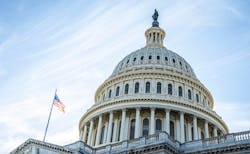NAHB's Lake Coulson Weighs in on the Latest Housing Policy Initiatives

In July, the White House released more details about its Housing Supply Action Plan to help ease the housing industry's supply shortage and affordability crisis. The multifaceted plan features legislative and administrative actions to reduce housing costs and boost supply, including creating and preserving hundreds of thousands of affordable rental and for-sale housing units during the next three years.
Those initiatives also include $85 million for the Pathways to Removing Obstacles to Housing grant program to be administered by the Department of Housing and Urban Development (HUD), and align with other policies for rental and down-payment assistance, rewarding jurisdictions that have reformed zoning and land-use policies, new public and private housing finance mechanisms, and public housing improvements designed to help close America’s housing supply shortfall by 2029.
The administration’s July statement is a follow-up to its introduction of the Housing Supply Action Plan in May of this year, which focused on easing rental housing costs for low- and moderate-income families and addressing skilled construction labor shortages.
That same month, the House of Representatives and the Senate introduced identical bipartisan bills intended to improve the federal Low-Income Housing Tax Credit (LIHTC) and allow home builders to increase production of affordable housing.
The National Association of Home Builders (NAHB) estimates that the Affordable Housing Credit Improvement Act initiated in the Senate and its mirror in the House would finance more than 2 million additional multifamily units over the next decade. As of late August, both bills remained in committee.
Lake Coulson, NAHB’s senior vice president for government affairs and the association's chief lobbyist, has been at the ground level of this recent and unprecedented housing policy activity—the result, in large part, of what has been his and the association’s ongoing advocacy and collaboration across agencies on several housing industry issues.
Coulson sat down with Pro Builder’s editorial director, Rich Binsacca, to provide some additional insight and perspective on how the federal government got here and what it will take to see these plans to fruition.
RELATED
- NAHB Develops Land Use Resources for Home Builders and Buyers
- Home Affordability Report Shows Increased Pressure for Attainable Housing
- A Toolkit to Combat the Labor Shortage
- Smart Growth for American Families: New Ideas to Promote Affordability
Pro Builder: The administration’s policy initiative seems like a really big deal. Is that your assessment as well, or is it a step that's part of a larger process?
Lake Coulson: This most recent announcement is a follow-up to an initial announcement made in May to lower housing costs and boost supply. So yeah, it's very comprehensive.
PB: Walk us through the process of how you and these policies got to this point.
LC: Our outreach and engagement with agencies including the National Economic Council, the Domestic Policy Council, and others, came together in this briefing and the timing of it. But certainly President Biden has made housing supply a priority, and this is just really the culmination of those efforts.
PB: How much influence do you think housing industry advocacy efforts—NAHB’s primarily and others—had on the White House? Or did the administration come in with an agenda to help address affordability and housing supply?
LC: I think NAHB had somewhat of an influence. Provisions such as addressing restrictive and costly zoning rules and other policies that would reduce the burden of regulation, as well as the low-income housing tax credit provisions, are things we have long advocated that appear in this plan.
And, in the announcement earlier this year, there were provisions that spoke to the shortage of lumber and support for careers in technical education and apprenticeship programs like [the Department of Labor's] Job Corps and Youth Build. Those are very important priorities for NAHB.
We would like to see more of our priorities conveyed in it, but I think, to some extent, we've been effective in getting some of our issues embedded into this.
PB: There are a lot of incentives mentioned in the White House plan, a lot of things that still require some action to initiate or fund, whether it's by Congress or others. What's the likelihood that such action is actually taken?
LC: I think getting anything through Congress is going to be formidable, especially something that deals with housing, though I don't think housing is unique in that regard. Obviously, Republicans control the House, and Democrats control the Senate and the White House. I think that in itself creates a lot of challenges in getting legislation enacted to implement some of the President's plan.
PB: Why aren't House Speaker Kevin McCarthy and Congress behind these efforts? I think some builders may be a little baffled or frustrated with their lack of action.
LC: It's a fair point. I honestly don't know where expanding the supply of housing fits into Speaker McCarthy's broader vision. But I do know that each and every day we are talking with legislators in support of pro-housing policies, and certainly policies to reduce the costs associated with building, so we can build more homes and increase the supply of housing.
PB: Let’s get back to the policy statement. Are there specific aspects you think will have the greatest impact toward achieving the administration's goals?
LC: I certainly look at the Low-Income Housing Tax Credit, something we have spent a lot of time on and is so important to building affordable housing, and this plan refers to expanding the LIHTC provision. So that’s certainly critical.
We want to be able to increase the supply of housing, that's what our members do. But it's very difficult in this [political and regulatory] climate when we have to meet the latest building code or subscribe to Waters of the United States permitting and decisions by the EPA [Environmental Protection Agency] to suspend jurisdictional determinations. It's a really difficult regulatory climate for our builders right now.
PB: The administration’s plan also promotes commercial-to-residential conversions and the allowance and construction of accessory dwelling units [ADUs]—the latter for middle- and even low-income homeowners to be able to create some extra living space for a family member or to use as a rental space. Would you consider that something private sector builders would get excited about or would at least view as another option to boost housing supply and attainability?
LC: Yes, absolutely. In fact, NAHB developed policy on commercial conversions during our June leadership meetings, so we are excited to see that and ADUs as part of the president's housing supply. For commercial-to-residential conversions, we are looking at whether there are provisions that exist in the tax code to make those conversions more friendly to builders that want to take on those challenges.
RB: What concerns do you have about the President’s plan, if any?
LC: We want to be supportive of a lot of this plan, but we're also cautious. Its call for increasing energy efficiency standards, for instance, comes with an increase in costs to the builder and to housing affordability. That just flies in the face of increasing housing supply and addressing housing affordability.
About the Author

Rich Binsacca, Head of Content
Rich Binsacca is Head of Content of Pro Builder and Custom Builder media brands. He has reported and written about all aspects of the housing industry since 1987 and most recently was editor-in-chief of Pro Builder Media. [email protected]
